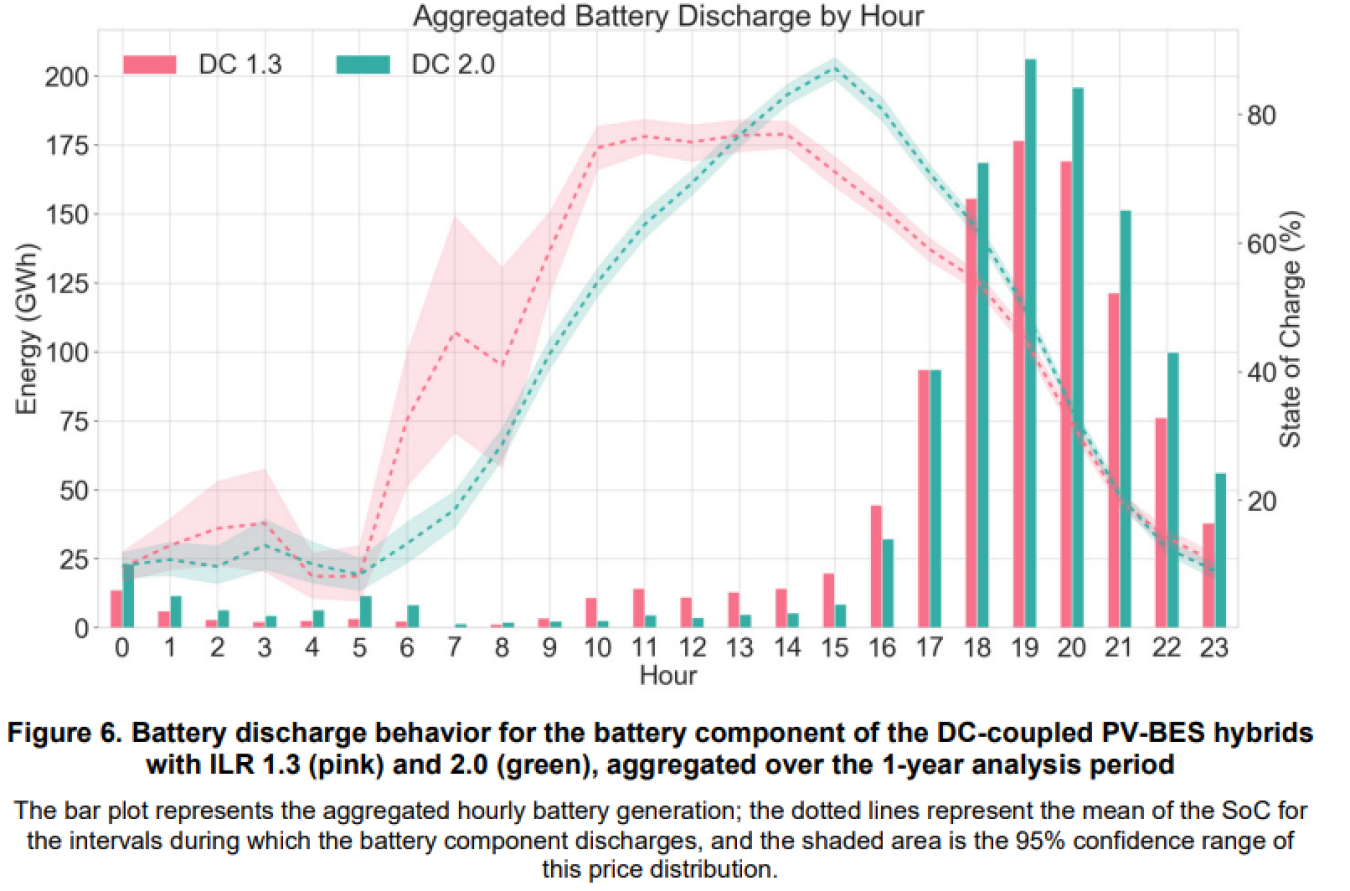This work presents modeling approaches for representing and evaluating PV-BES hybrids in a model that optimizes operations across the bulk power system. Its novel contributions include demonstrating a technique to modify a unit commitment and dispatch model to represent the operational synergies of PV-BES hybrids. In particular, we describe the challenges of, and an approach for, representing so-called DC-coupled PV-BES—which use a single bidirectional inverter—as a dispatchable resource in a commercial, production cost model (PCM), namely PLEXOS. We demonstrate this technique in a PCM study of the Los Angeles Department of Water and Power test system, by replacing existing PV and battery generators on the test system with our PV-BES hybrids. We then pursue scenario analysis designed to isolate the various drivers of operational strategies for DC-coupled PV-BES hybrids, including the nature of coupling, PV penetration on the system, and varying inverter loading ratios (or degrees of over-sizing the PV field). Results from the analysis include utilization profiles for the PV DC energy across available pathways, dispatch profiles for the battery component, and the hybrid technologies’ impacts on system-wide production costs. The approach we present can be used in any PCM study of PV-BES hybrids as a resource in different power system configurations and services.


